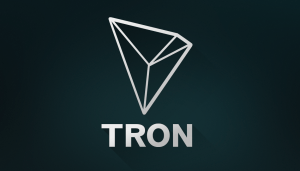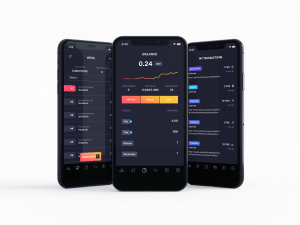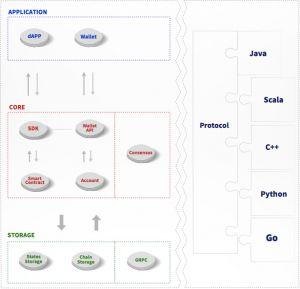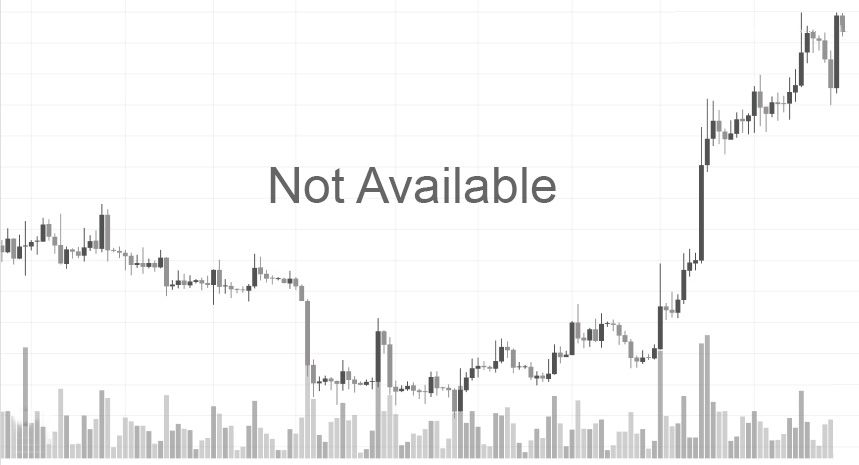The altcoin market remains a vibrant arena within the cryptocurrency ecosystem, with different projects and tokens offering diverse use cases and communities. Launched in 2017 as a third-generation blockchain platform vying to improve upon the frontrunners at the time, including Bitcoin and Ethereum, Tron (TRX) is one of the most well-known projects in the cryptocurrency arena. In the past 24 hours (April 26, 2024), Tron price has increased with a change of +2.55% in the past 24 hours, and trading at a price of $0.117.
Aiming to revolutionize the entertainment industry, Tron has courted both success and controversy since its launch. So, what is Tron, and what should potential investors understand about it? Keep reading to find out about Tron, how it works, and how its historical price performance might give insights into the future success of the project.

Tron price analysis
Coin Name TRON TRON Symbol TRX TRON Price $0.117 TRON Price Change 24h ▲ 2.55% TRON Price Change 7d ▲ 8.13% TRON Market Cap $10,816,642,403 Circulating Supply 92,345,222,419 TRX
As of April 26, 2024, Tron is trading at around $0.117 per token. The current TRX price is a drop of over 50% from its all-time high of approximately $0.30 per token in January 2018, but an increase of over 80% from its position compared to March 2023. This is in part due to the bullish trend in the broader crypto market as of early 2024, in anticipation of the April 2024 Bitcoin halving event.
Factors influencing Tron’s price
Bullish market sentiment, especially as Bitcoin continues to reach new all-time highs after reaching the $70,000 mark, is a major reason for the surge in TRX’s price. At the same time, Tron is among the top-ranking altcoins by market cap.
Beyond the positive market sentiment, developments in the Tron ecosystem remain significant price influencers. A crypto project’s roadmap gives investors something to stake their trust and money in, and can cause a spike in network activity or price – as seen with the increase in Tron’s price after the release of its February 2024 roadmap.
What’s more, throughout its history, Tron has formed partnerships with various companies and projects. This has typically resulted in increased interest from investors, and driven a price increase. For instance, following its collaboration with Samsung in 2019 to integrate Tron’s blockchain technology into Samsung Galaxy smartphones, TRX’s price shot up by around 7%.
Tron market performance
As of March 2024, Tron has a market capitalization of approximately $11bn. While Tron is dwarfed by leading competitors such as Ethereum (ETH) and Cardano (ADA), which have market caps of around $480bn and $27bn respectively, it is still positioned as one of the top 20 cryptocurrencies ranked by market cap.
What Is TRON?
Tron is a blockchain-based platform that provides users with a free and global network for sharing and monetizing content directly, without intermediaries. It supports decentralized applications (DApps) and smart contracts, aiming to revolutionize the digital entertainment industry and create an environment where content creators and users can interact directly, facilitating the easy creation and acquisition of digital assets.
This gives content creators more control over their content and increases their revenue. Tronix (TRX) is the native currency of the Tron network. It plays different roles on the network, including as a voting mechanism, staking and transaction fees.
How does Tron work?
As mentioned, Tron aims to democratize digital content by enabling direct content sharing and monetization.
Delegated proof-of-stake consensus mechanism
Tron relies on a delegated proof-of-stake (DPoS) consensus mechanism to operate. Within this DPoS system, token holders vote for 27 ‘super representatives’ (SRs), who validate transactions and secure the network.
After being elected, SRs earn the right to receive TRX tokens as a reward for verifying the authenticity of transactions. These SRs are re-elected after every six hours to ensure integrity and transparency of the process.
Tron aims for high transaction throughput, with architecture that is able to support 2,000 transactions per second, enabling fast and efficient transaction processing while maintaining low transaction fees.
Tron Virtual Machine
Tron Virtual Machine (TVM) is a virtual machine built on the Tron blockchain that allows developers to execute smart contracts written in languages such as Solidity, making it compatible with Ethereum-based DApps.
Decentralized storage
Tron incorporates decentralized storage solutions to ensure the security and accessibility of data shared on its platform. This reduces reliance on centralized servers and enhances censorship resistance.

Who created Tron?
Tron was established in 2017 by Justin Sun, a Chinese entrepreneur who has featured on prestigious lists, including the 2015 Forbes China 30 Under 30 and the 2017 Forbes Asia 30 Under 30. Sun also created Peiwo, the Chinese version of instant messaging app Snapchat. Tron’s early developer team also comprised Xiaodong Xie and Maorong Lin, both of whom have a background in technical development.
Via the Tron Foundation, Sun and the team raised $70m to support the project in 2017 in a three-day sale of TRX tokens. The project gained traction in 2018 after the Tron foundation acquired BitTorrent, a peer-to-peer content sharing platform that was already popular with a lot of crypto users.
How to buy and store Tron
Tron exists on numerous centralized and decentralized exchanges, including Binance, Bybit, Gate.io, Kraken, CoinEX and Dex-Trade. This makes TRX accessible to all investors who are interested in buying it. To buy TRX, follow the steps below:
- Step 1: Choose a reputable exchange and create a trading account.
- Step 2: Complete identity verification (KYC) if required.
- Step 3: Deposit funds using the supported payment methods.
- Step 4: Search for TRX and buy the desired quantity on the trading platform.
- Step 5: Transfer the TRX tokens to a self-custodial wallet.
You can store Tron in any of several Tron-compatible wallets, including Atomic Wallet, TronLink, Guarda Wallet, Exodus and Edge. That being said, transferring your coins to an external crypto wallet is a proactive security approach to hedge against potential losses if your exchange gets compromised. You can find popular hardware/cold wallets such as Trezor and Ledger, or opt for software/hot wallets such as MetaMask and Trust Wallet.

The Future of Tron
In February, 2024, the ambitious vision for Tron was revealed. The network is poised to introduce a Bitcoin Layer 2 solution that will connect different types of digital tokens, such as stablecoins, within TRON’s network with Bitcoin’s network. This integration aims not only to directly connect Tron with Bitcoin, but also add over $55bn in value to the network.
Another development will include Tron collaborating with Bitcoin Layer 2 protocols and announcing major partnerships to enable users to stake across major Bitcoin Layer 2 networks.
Risks and challenges
Like all cryptocurrencies, one of the significant risks of investing in TRX is a lack of regulatory clarity. With unclear crypto regulations in most regions worldwide, investors should consider how potential regulatory changes or new legislation may impact Tron’s utility, adoption and price.
There are also security concerns to investing in Tron, including smart contract vulnerabilities that hackers could exploit. One way that the Tron Foundation is addressing network vulnerabilities is by offering a bug bounty program. A bug bounty incentivizes ethical hackers to find and report any loopholes in the code. One such bug bounty was for $10m when the Tron Foundation launched the Tron Mainnet in 2018.
Moreover, the crypto market is volatile. So, while investing in TRX might seem like an attractive consideration, especially during bullish market cycles, sharp and fast price movement is a significant risk to investors. Consider diversifying your portfolio across asset types, and mapping out an effective risk-management strategy to mitigate against this risk.
Regulatory and legal aspects of Tron
There’s no single, unified approach to crypto regulation, and this varies depending on jurisdiction. However, Sun, Tron and affiliated companies have been the target of the US Securities and Exchange Commission (SEC).
In March 2023, for instance, the SEC initiated legal action against Sun, the Tron Foundation, the BitTorrent Foundation (which the Tron Foundation acquired), and BitTorrent (now renamed Rainberry) for offering TRX and BitTorrent (BTT) tokens, which the agency characterized as unregistered securities.
The SEC also accused Sun and the companies of wash trading so as to artificially inflate the trading volume of TRX. In the same complaint, the agency also brought charges against eight celebrities including singers Ne-Yo and Akon for promoting the tokens without disclosing that they were being paid to do so, and how much.
At the news, the Tron price dropped 12%. Binance.US also delisted the token at the time. These market reactions illustrate what can potentially happen in the case of unfavorable regulatory actions.
Community and ecosystem
Typical for most crypto projects, Tron’s community has been pivotal for fueling its growth. The Tron community is active online, particularly on Reddit and Telegram. Tron also has an active developer community that creates DApps that run on the Tron Blockchain. TRON Accelerator and HackaTRON are two of the Tron community initiatives where developers come together to showcase their skills, build DApps and stand a chance of winning funding, support and exposure for their projects.
Comparing Tron to other cryptocurrencies
Tron has been accused of simply copying existing blockchains and not introducing any novel ideas. There have also been concerns over its delegated proof-of-stake (DPoS) consensus mechanism, with critics contending that this governance mechanism is too centralized and goes against the original ethos of crypto. So, let’s see how it compares to Ethereum and Cardano, its third-generation blockchain contemporaries.
Tron vs Ethereum
Ethereum (ETH) is the second-biggest cryptocurrency as of March 2024, and was the first blockchain to introduce DApps and smart contracts. One of the main downsides of Ethereum is that it is incredibly slow to process transactions, and can only muster between 20 and 30 transactions per second (TPS) at the time of writing. In comparison, the Tron network has a TPS of about 2,000 transactions per second.
Tron is also cheaper than Ethereum in terms of transaction fees, which can range from a few dollars to hundreds of dollars. Faster and more affordable transactions increase Tron’s scalability potential over Ethereum. While Tron blows Ethereum out of the water in those metrics, it hasn’t managed to attract as many developers as Ethereum and ranks lower than Ethereum in terms of market capitalization.
Tron vs Cardano
Cardano (ADA) is a peer-reviewed crypto project that seeks to improve the scaling problems of the blockchain trailblazers, such as Bitcoin and Ethereum. The Tron network can handle up to 2,000 transactions per second. While in theory, Cardano can handle the same number of transactions, this is really only true on paper, and when put into practice, Cardano often fails to perform. Tron also has negligible fees of about $0.0003, with Cardano’s fees being at an average of $0.15, making Tron cheaper. Despite this, Tron is not as popular as Cardano, and has a lower market cap as of March 2024.
FAQs
How much is one Tron to buy?
You can purchase one unit of Tron for less than $0.15, as of March 2024. However, crypto prices are highly volatile and this is likely to fluctuate hugely over time.
Is Tron actually safe?
Tron’s blockchain technology gives it inherent security. However, all cryptocurrencies have risks, and investors should make sure that they understand these fully, and take proactive protective measures to secure assets safely, before parting with any capital.
How many Tron coins are in circulation?
The total supply of TRX sits at just over 100 billion tokens, with almost 75% of these in circulation at the time of writing.
